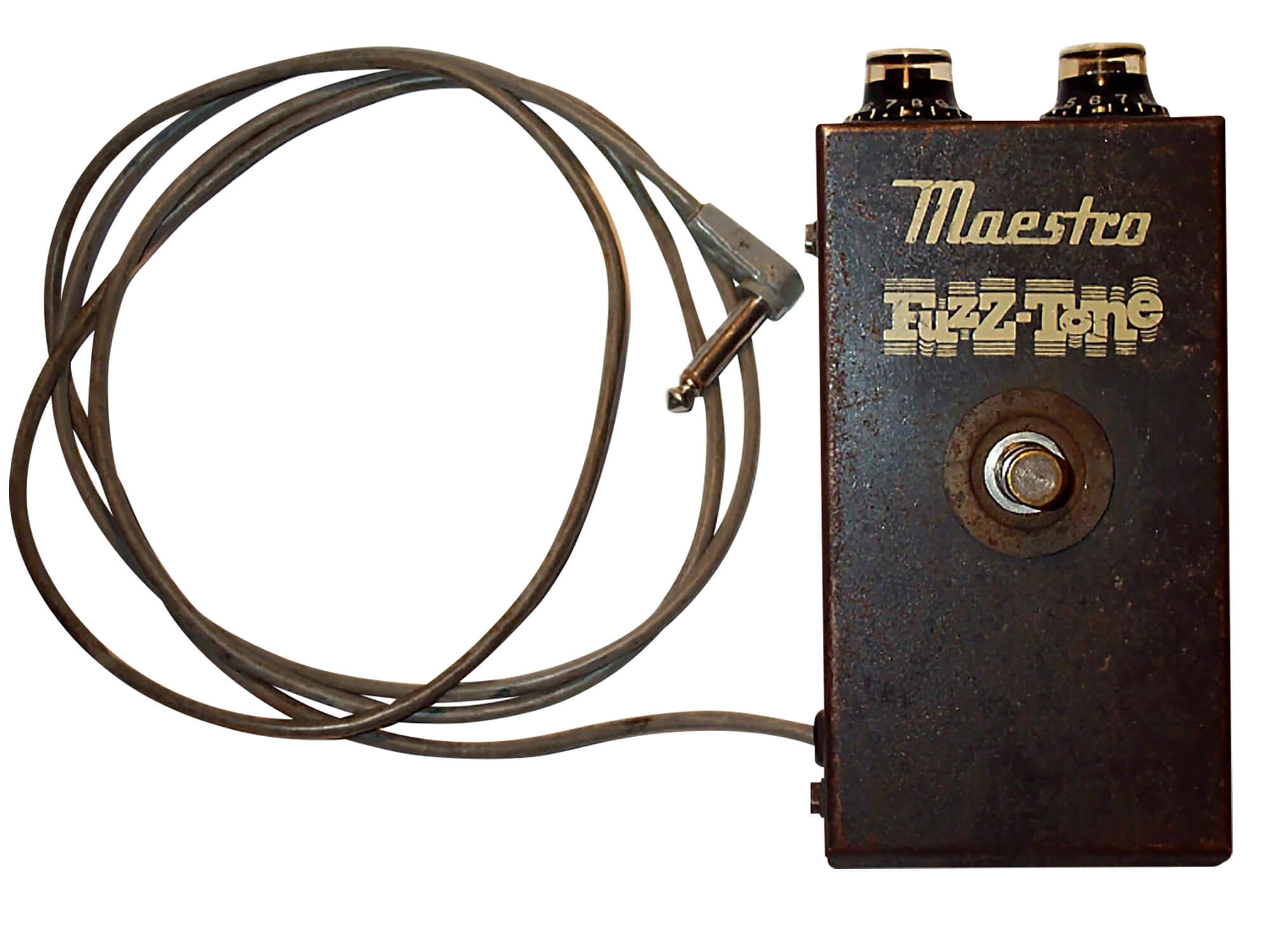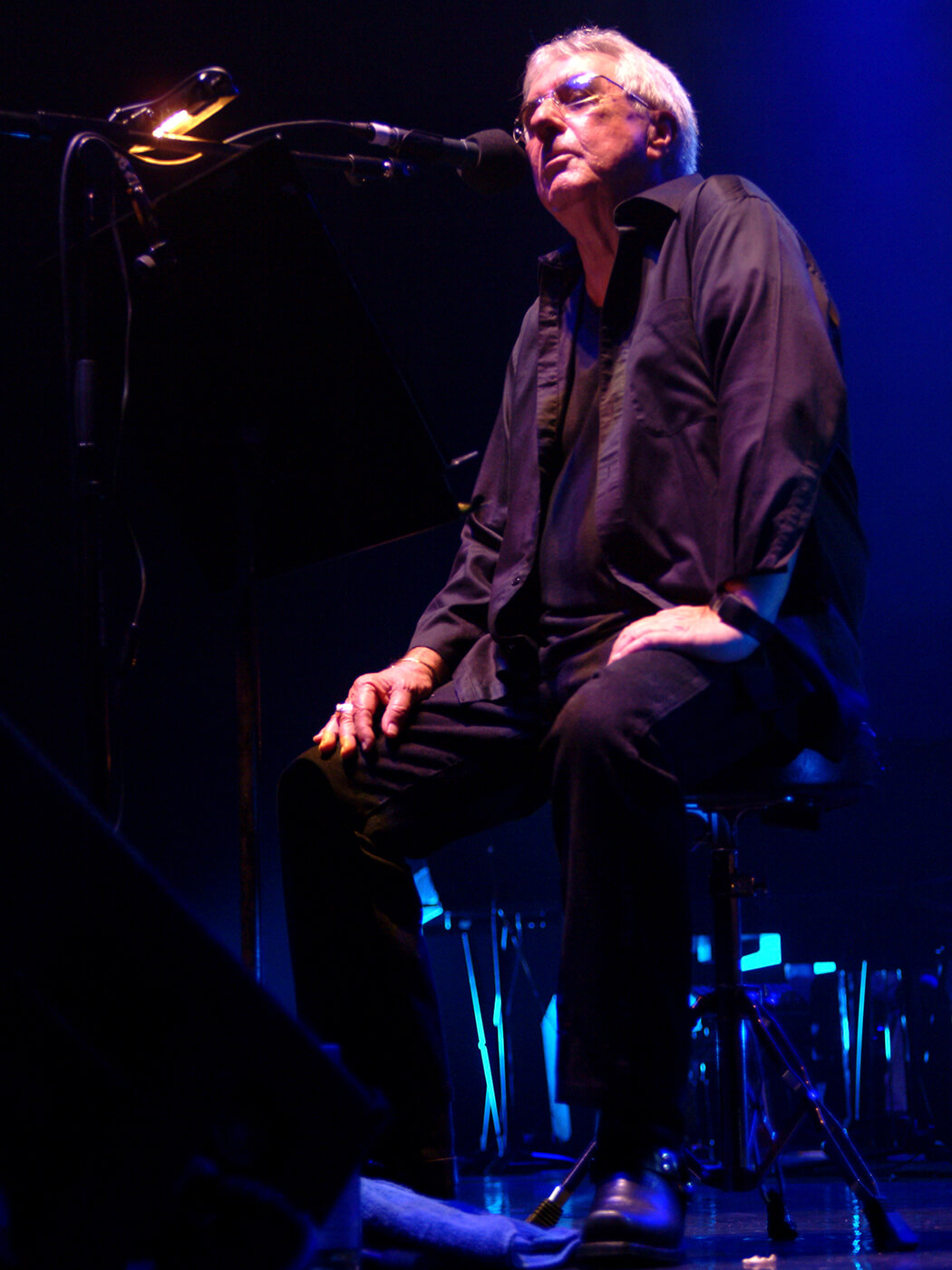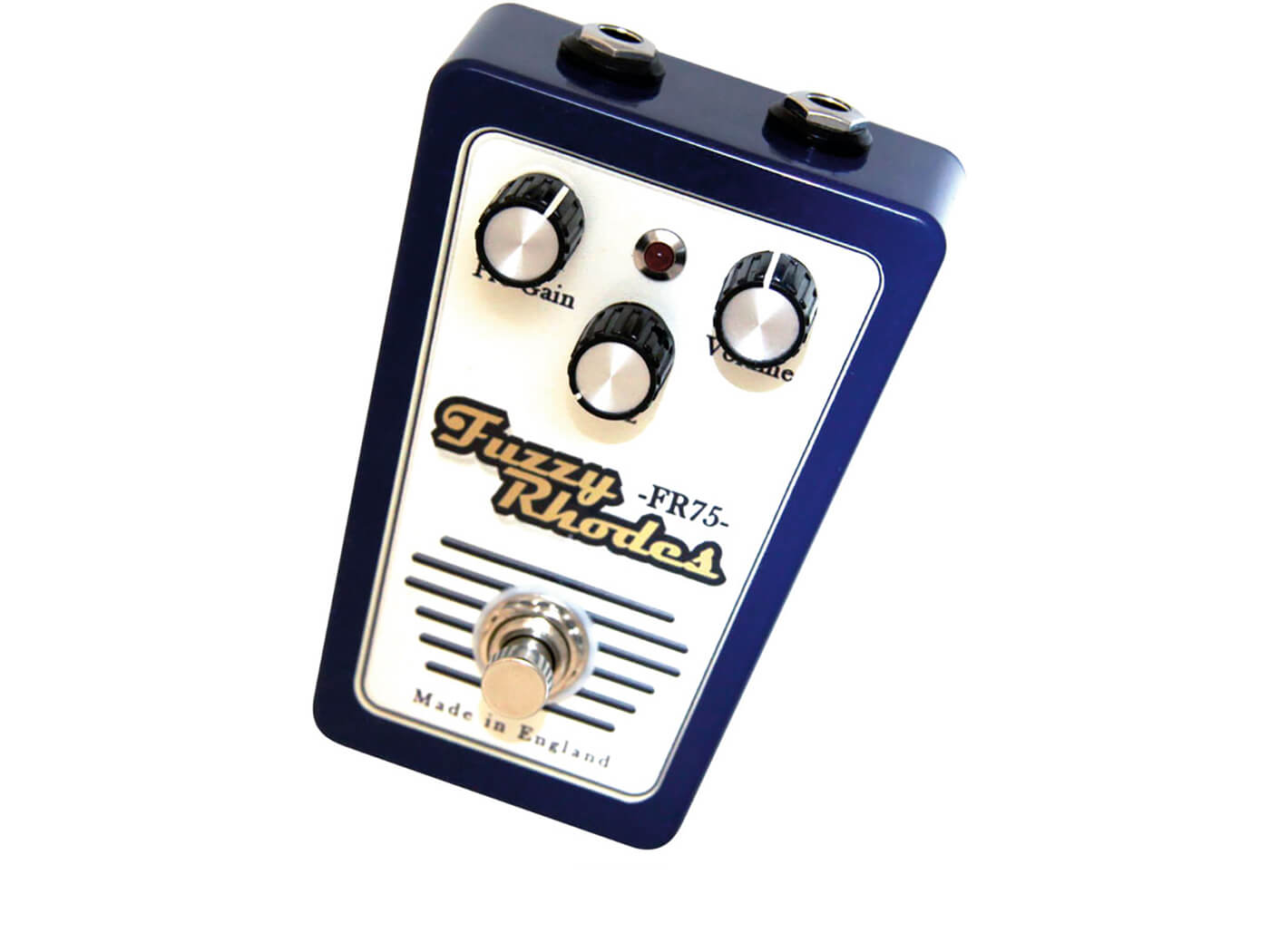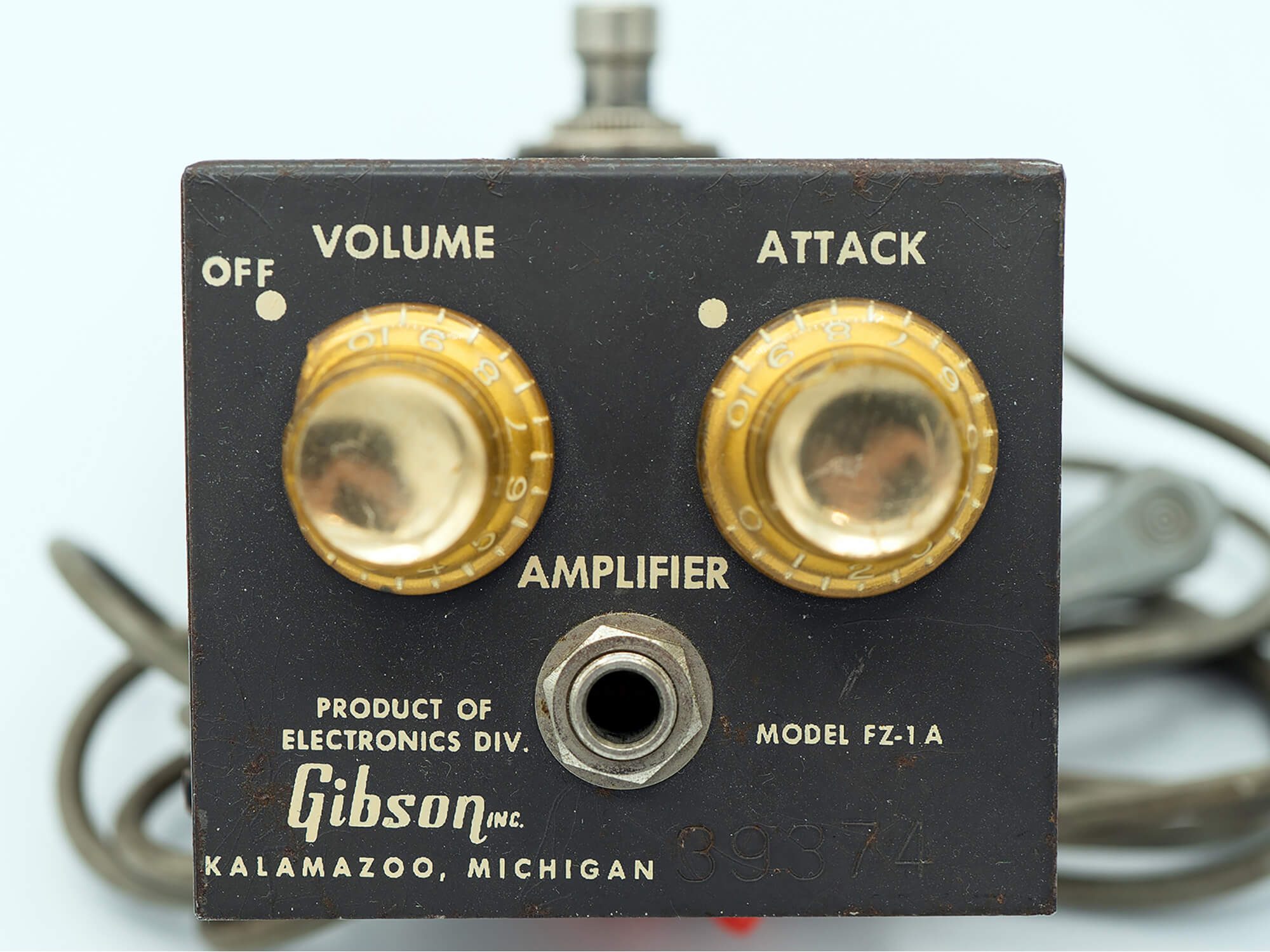Related Tags
Josh Scott: The deleted scenes of guitar history
Following on from last year’s exploration of the unlikely and remarkable birth of fuzz through the Maestro Fuzz-Tone, the JHS main man explores the near misses and dead ends that could have made a very different story indeed.

Keith Richards of The Rolling Stones. Image: Kevin Mazur / Getty Images for RS
The phrase “history is written by the victors” has ricocheted off the halls of history for as long as there have been victors. This saying implies that those who win or come out on top get to write how it all went down and, more importantly, how we remember it. While revisionist history has made a comeback through avenues like Broadway’s Hamilton and Malcolm Gladwell’s appropriately titled podcast Revisionist History, this is still largely true. This saying shines a light on how we perceive the past, what we remember, and why.
Even guitar history is susceptible to this dynamic. The first half of the 1960s was an explosive time for music and the innovation that fueled it, and the Maestro Fuzz-Tone was at the center of that explosion. Although many credit the Fuzz-Tone with single-handedly starting the fuzz craze, that’s a major oversimplification. True, it helped transform the electric guitar from the adolescent, clean, jangly sound of Peggy Sue and I Want To Hold Your Hand into the full-on nuclear assault of songs like Purple Haze and Communication Breakdown, but the Fuzz-Tone didn’t do it alone.
The Fuzz-Tone was the first fuzz pedal (and guitar pedal in general) to be produced for mass consumption, but it was not the first device to create such a sound. Up until now in this series, you’ve mostly heard the winners’ stories, but between that accidental malfunction of Glen Snoddy’s tube mixer channel during the Nashville recording session of Don’t Worry and Keith Richard’s mid-sleep epiphany of Satisfaction four years later in 1964, a lot happened behind the scenes.
So, before we tackle the Tone Bender and commit to moving our narrative fully into 1965, I want to cover these easily overlooked moments from the first half of the 1960s. You can think of these as the guitar’s deleted scenes from the greatest decade in rock history.

Go on home
Our first stop is Phoenix, Arizona. Producer and songwriter Lee Hazlewood was known as a pioneer in the recording booth, and in 1960 he commissioned a Phoenix radio station technician to create a “fuzz box” that would allow him to produce the sound of fuzzed-out distortion on demand. Sadly, the technician’s name is lost to history, which only underscores my earlier point: important moments (and people!) are often obscured by the bigger headlines.
Session guitarist Al Casey was the first musician to use this “fuzz box” in a recording, specifically in Sanford Clark’s Go On Home. In an interview, Casey explained that he and Clark wanted a “good, nice, clean sound” but that Hazlewood pushed for something more “distorted.” Hazlewood got his way in the end, and as a result Go On Home was released in March 1960 featuring gritty, distorted fuzz. Listen to the track and you will hear this fantastic fuzz sound used in tandem with what seems to be the tremolo tone from his amplifier. The sound is fat and warm and the tremolo adds the perfect movement to the track. It’s like a beautifully broken Spaghetti Western soundtrack.
This is one of the first, if not the first recorded use of an electronic circuit specifically built to create a distorted fuzz tone on a guitar. Note that this is not the first recorded use of “fuzz”, as many other methods of producing fuzzy, distorted guitar tones had been used prior to this (even as far back as 1946 with the Bob Wills Boogie), but this was likely the first use of a solid-state electronic device to produce the sound. Now, here’s where the timeline gets a little confusing. That same year, Don’t Worry was recorded and the infamous broken mixer channel created a very similar fuzz tone on Grady Martin’s six-string bass. The difference? Don’t Worry achieved its fuzz sound purely by accident, an electronic malfunction due to a blown transformer, whereas Hazlewood had built a device specifically to create this fuzz sound.
If you’ve been following this column, you already know that Glen Snoddy liked the fuzz effect in Don’t Worry so much that he collaborated with radio technician Revis Hobbs to create a circuit that replicated that broken mixer’s sound. This collaboration in return created the first mass-produced guitar pedal, the Maestro Fuzz-Tone. What most people do not realize is that the “fuzz box” that Hazlewood commissioned in 1960 and used on Sanford Clark’s Go On Home predates the Maestro Fuzz-Tone’s design by at least a year (Revis designed that circuit sometime in 1961).
Does this devalue Hobbs and Snoddy’s monumental accomplishment in creating the Fuzz-Tone? Not at all. But Hazlewood’s unnamed “fuzz box” also represents a (largely unknown) landmark moment in guitar history. This comparison also highlights how much a good idea is usually dependent on great marketing. Both Hazlewood and Snoddy made a groundbreaking device, but because Snoddy successfully pitched his device to Gibson/Maestro, he and Hobbs were the victors. In turn, this partnership allowed the Maestro Fuzz-Tone to make its way from the humble beginnings of Revis Hobbs’ home workbench into the hands of such guitarists as Jimi Hendrix, John Lennon and Keith Richards.

The Rhodes less travelled
Our next stop is California, 1961, the same year that Revis Hobbs designed the Maestro Fuzz-Tone with Glen, but a full year before it would hit the market. A pedal steel guitarist and electronics technician named Orville “Red” Rhodes tried his hand at making a fuzz circuit he could use in the recording studio – and he succeeded. He produced the Rhodes fuzz in a small metal box, a simple device with a distortion level knob and a bypass switch. The Rhodes fuzz box worked so well that he ended up making several to sell to his fellow musicians (including Nokie Edwards of the Ventures and Billy Strange of the Wrecking Crew).
The best-known use of the Rhodes fuzz was in the Ventures’ 1962 hit The 2000 Pound Bee. This single is generally accepted as the first recorded use of fuzz in a rock ’n’ roll song. I don’t know about you, but I find it deliciously ironic that country music popularized fuzz first, not rock ’n’ roll. Nokie Edwards played guitar on the track and also used the Rhodes fuzz on albums like Walk Don’t Run (1964) and Live in Japan (1965).
Some historians speculate that the Rhodes fuzz was created in 1962 and inspired by Don’t Worry, but this theory has major issues. For one thing, both Billy Strange and Ann-Margret Olsson used the Rhodes fuzz on separate recordings in 1961. For another, Nokie Edwards was seen using the Rhodes fuzz while performing in Hawaii in December 1961. Unless time travel was in play in the early 1960s, we have a problem. There’s even evidence to suggest that Rhodes may have made this fuzz circuit as early as 1960 – which means it could possibly predate the Hazlewood “fuzz box” and the Maestro Fuzz-Tone.
Basically, this isn’t a well-documented period of history, so it can be challenging to know for certain who did what first. But recordings like The 2000 Pound Bee, Go On Home, and Don’t Worry definitely prove one thing: circa 1962, fuzzed-out electric guitar was already on the rise.

The Fuzz that never existed
The United Kingdom may be the birthplace of modern rock, but in 1962 (two years before the British Invasion) fuzz was still finding its feet. The same year that Gibson released the Maestro Fuzz-Tone, Dick Denney (who designed the Vox AC15 and AC30 amps) claims to have made his own prototype clone of the FZ-1 more than three years before he assisted in developing the Vox V816 Distortion Booster, encasing the simple prototype circuit in a truly DIY OXO Cube tin.
The reason this first pedal never made it to the production line, Denney argues, is that the Fuzz-Tone was still selling poorly (this was three years before The Rolling Stones would rocket it to popularity with Satisfaction), so Vox wasn’t willing to risk financial loss by producing their own version. Moreover, Tom Jennings absolutely hated the sound of distortion and didn’t want anything to do with a fuzz box. Curiosity pushed Denney to make his prototype anyway and Denney claims that a “rogue employee” working for Vox stole this design and started selling fuzz boxes himself (though it’s anyone’s guess who this employee could have been, I have my hunches). Nearly 60 years later, Denney’s prototype still hasn’t resurfaced, so we have to file this pedal’s existence under “rumor” rather than “fact.”
But another Fuzz-Tone clone may have been created in 1964. Guitarist Jimmy Page allegedly approached electronics guru Roger Mayer (you may know Roger better as the guy who later designed the Octavia Fuzz and pitched it to Jimi Hendrix after a gig in 1967) and Jimmy asked him to build a device that would replicate the Ventures’ distorted guitar sound in The 2000 Pound Bee. Although the FZ-1 had been on the market for two years at this point, it was still considered a flop and wouldn’t have been easily available in London. So how could Roger Mayer have made a clone of it? A touring musician might have brought the FZ-1 back from the United States and sold it to Roger Mayer. More likely, the design of the FZ-1 circuit was so simple that it was easy for another engineer to recreate it or get darn close using transistor “cookbooks” available at the time.
For his part, Mayer claims that he had never seen an FZ-1 when he created this pedal, so the facts are a little murky on this, too.
In any case, the pedal that Roger Mayer produced for Jimmy Page was a clone or approximation of the FZ-1 with a few major differences:
- It used Mullard germanium transistors
- It was made with components available in the UK rather than the US, which combined to produce a richer tone with more sustain.
It was rumored (but not confirmed) that Page used this pedal both in the recording studio and while touring with the Yardbirds. With almost 60 years between us and this story, we may never know for sure.

Knitting needles and box cutters
Full disclosure: I debated whether to include this story. It’s not exactly a “deleted scene” (honestly, it’s a story that we’ve all heard in one form or another), but it’s important to the timeline of fuzz, so I’m rolling with it.
To understand this story well, you have to understand that there are myths that are so ingrained in the guitar community that we don’t really care if they’re true or not. This is one of those stories. What’s funny is that we know what happened. It’s a certified fact. What we don’t know is how it happened.
The Davies brothers, founding members of the Kinks, recorded arguably their most iconic song in 1964 – You Really Got Me. This song basically trail-blazed the use of power chords as we know them, and it’s cited as the birthplace of the metal genre (it’s no coincidence that Van Halen covered the song in 1978). The heart of the song is, naturally enough, a fuzzed-out electric guitar. But the real question is how that fuzz effect made it onto the track.
Dave and Ray Davies both claim to have taken a razor blade, box cutter or knitting needle to an Elpico amp nicknamed ‘Little Green’. Reports vary as to what weapon was used – or who wielded it, for that matter –but the end result was an utterly destroyed speaker that produced a distorted, fuzzed-out sound.
Dave attempted to set the record straight in a 2015 Facebook post, in which he clarified: “My brother [Ray] is lying. I don’t know why he does this but it was my Elpico amp that I bought and out of frustration I cut the speaker cone up with a razor blade… I played the riff on my guitar with MY new sound. I ALONE CREATED THIS SOUND.” But this still raises more questions than it answers: why would a frustrated Dave take a knife to his own amp? Was the amp not working? Was he frustrated with the direction the band was going? Did he just lose to his brother in a particularly competitive game of rock, paper, scissors? We don’t know, but this brotherly feud has gone down in history as one of the greats, right alongside the Gallagher brothers and Cain and Abel.
Coincidentally, this specific sound was so coveted that Electro-Harmonix released a distortion pedal in 2021 called the Ripped Speaker Fuzz. In the end, life imitated art.

The harmonic generator
This next story comes courtesy of fellow pedal historian Nick Sternberg, a dude who has devoted countless hours to the study of guitar pedals and may actually have me beat in terms of sheer nerdiness. He is also British, which automatically makes him more interesting than me, a boring Midwest American. His website fuzzboxes.org and his generous time answering my insane questions were a huge help in putting this article together, but I’d be remiss if I didn’t include his most recent discovery: the Harmonic Generator.
The story starts in the early 1960s, with a gear company called GP Electronics, founded by inventor Gerry Pope. During the 60s and 60s, GP produced a pretty wide variety of gear, including amps, PAs, treble and bass boosters… and one guitar pedal: The Harmonic Generator distortion.
According to Nick, the Harmonic Generator was allegedly conceived in 1964, after somebody referred Pope to an “American recording” of a fuzz sound. This would have been a year too early for The Stones’ Satisfaction, so it’s likely that the American recording in question was either The 2000 Pound Bee, Don’t Worry or Grady Martin’s The Fuzz. Nick adds that strong anecdotal evidence confirms that the Harmonic Generator was already available to the general public between late 1965 and early 1966. Again, this is where the dates get a little dicey. Depending on just how late in 1965 PG Electronics released the Harmonic Generator, it could pre-date the Sola Sound Tone Bender. Regardless, the timeline shows that Pope had the foresight to develop a fuzz pedal before Satisfaction rocketed the effect to fame in 1965, which reflects impressive intuition.
The Harmonic Generator allegedly made its way into the hands of guitarists like Martin & Glen Turner (later of Wishbone Ash), The Shadows (in “Bombay Duck” & “Tennessee Waltz”) and the New Vaudeville Band (in “Winchester Cathedral”).
This all basically boils down to two questions. Have most people heard of the Harmonic Generator? No. Did it still change guitar history? Yes.
In closing out this chapter of forgotten guitar effects, it is important that we take the time to dig a little deeper. Invention is more of a gradual evolutionary process than a sudden epiphany. Nothing just appears from thin air. Everything we love about guitar comes from a collective of ideas that have been accumulated, shared and improved upon, and every guitar effect has its roots in another device or inventor. Some ideas make huge splashes while others are resigned to a ripple, but that doesn’t mean one is more important than the other.
It just means that, for better or for worse, history is written by the victors.
Join Josh for more effects adventures at thejhsshow.com.
